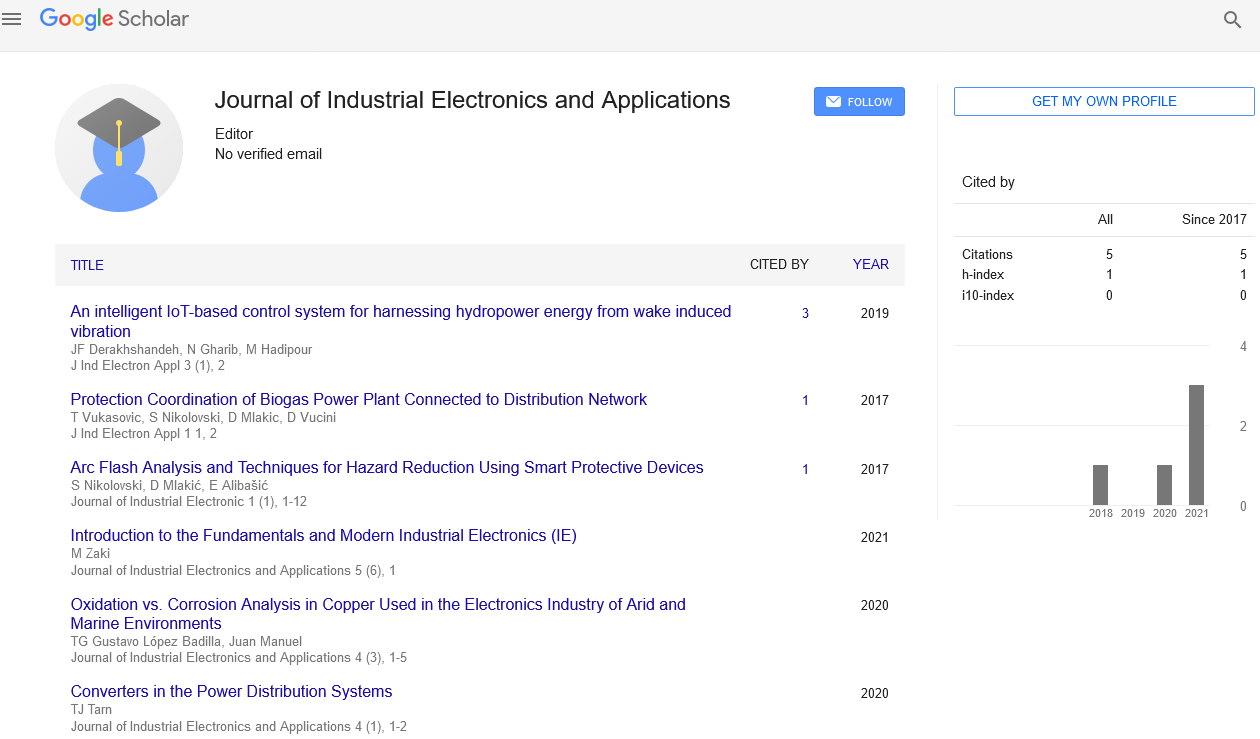Perspective, J Ind Electron Appl Vol: 7 Issue: 4
Exploring the Advancements of Industrial Materials Informatics in Large-Scale Operations
Fiorella Trappey*
1Department for E-Governance and Administration, University for Continuing Education Krems, Krems an der Donau, Austria
*Corresponding Author: Fiorella Trappey,
Department for E-Governance and
Administration, University for Continuing Education Krems, Krems an der Donau,
Austria
E-mail: trappeyfiorella1@donau-uni.ac.at
Received date: 01 November, 2023, Manuscript No. JIEA-23-124016;
Editor assigned date: 03 November, 2023, PreQC No. JIEA-23-124016 (PQ);
Reviewed date: 20 November, 2023, QC No. JIEA-23-124016;
Revised date: 27 November, 2023, Manuscript No. JIEA-23-124016 (R);
Published date: 04 December, 2023, DOI: 10.36648/JIEA.1000052
Citation: Trappey F (2023) Exploring the Advancements of Industrial Materials Informatics in Large-Scale Operations. J Ind Electron Appl 7:4.
Abstract
In the rapidly evolving landscape of large-scale industries, the integration of materials science and informatics has given birth to a powerful discipline known as industrial materials informatics. This innovative approach leverages data-driven insights to tackle applied problems in Research and Development (R&D), manufacturing processes, and supply chain management.
Description
In the rapidly evolving landscape of large-scale industries, the integration of materials science and informatics has given birth to a powerful discipline known as industrial materials informatics. This innovative approach leverages data-driven insights to tackle applied problems in Research and Development (R&D), manufacturing processes, and supply chain management. This article delves into the multifaceted role of industrial materials informatics in reshaping the operations, innovations, and optimizations of large-scale industries.
The foundation of industrial materials informatics
At the heart of industrial materials informatics lies the seamless integration and analysis of extensive datasets, encompassing materials properties, manufacturing processes, and supply chain dynamics. This data-driven approach empowers industries to derive actionable insights, make informed decisions, and optimize their operations comprehensively. The core of industrial materials informatics incorporates machine learning algorithms and predictive modelling. These elements play a pivotal role in training models on historical data, enabling industries to predict material behaviours, optimize manufacturing processes, and proactively anticipate disruptions in the supply chain. This predictive capability enhances operational efficiency and mitigates uncertainties.
Applications in research and development
Industrial materials informatics expedites the materials discovery process by leveraging comprehensive databases containing material properties, performance metrics, and behavioural patterns. Researchers can efficiently identify promising materials for specific applications, significantly reducing the time and resources traditionally required for R&D endeavours. Through the implementation of virtual prototyping and simulation, materials informatics facilitates the testing and analysis of materials in a simulated environment. This not only accelerates the design process but also minimizes the necessity for physical prototypes, thereby reducing costs and lessening the environmental impact of R&D activities.
Revolutionizing manufacturing processes
Materials informatics plays a crucial role in optimizing manufacturing processes by scrutinizing data generated on production lines. Employing machine learning algorithms, industries can identify patterns and make real-time adjustments to enhance efficiency and maintain stringent quality control standards. This ensures consistency and reliability in large-scale manufacturing. Advanced analytics in materials informatics enable the detection of faults and anomalies in manufacturing equipment. By predicting potential issues, industries can implement preventive measures, reducing downtime and minimizing the risk of producing defective products. This proactive approach enhances overall operational resilience.
The predictive analytics capabilities of industrial materials informatics are instrumental in supply chain management. By analyzing historical data, industries can forecast demand, optimize inventory levels, and anticipate potential disruptions, ensuring a more resilient and responsive supply chain. This proactive approach minimizes the impact of uncertainties. Data-driven insights derived from materials informatics contribute to strategic supplier relationship management. Industries can assess supplier performance, identify alternative sources, and negotiate contracts based on a comprehensive understanding of material availability, pricing trends, and reliability. This data-driven approach fosters more resilient and collaborative supplier relationships.
Future directions and innovations
The integration of materials informatics with the Internet of Things (IoT) and sensor technologies holds immense potential. Real-time data from sensors on manufacturing equipment and supply chain nodes can enhance the granularity and accuracy of materials informatics insights. This interconnected approach offers unprecedented visibility into operational processes. Incorporating blockchain technology into materials informatics can further enhance transparency and traceability in the supply chain. This ensures the authenticity of materials and helps in compliance with regulatory standards. Blockchain's decentralized nature adds an additional layer of security and trust to the supply chain. The diverse nature of data sources in large-scale industries poses challenges in terms of standardization. Addressing this challenge involves the development of industry-wide standards for data formats and metadata, ensuring seamless integration and compatibility across the entire value chain. The successful implementation of industrial materials informatics requires collaboration between materials scientists, data scientists, and engineers. Encouraging interdisciplinary communication and fostering a culture of collaboration are essential for overcoming silos and ensuring the seamless integration of materials informatics solutions.
Conclusion
Industrial materials informatics stands at the forefront of a paradigm shift in large-scale industries, where data-driven insights reshape R&D, manufacturing, and supply chain operations. The ability to harness the power of data for accelerated materials discovery, process optimization, and supply chain resilience is unlocking new possibilities for efficiency, innovation, and sustainability. As industries continue to embrace the potential of industrial materials informatics, the landscape of large-scale manufacturing is poised for further transformation, ushering in an era of informed decision-making and optimized industrial processes that align with the evolving demands of the global market.
 Spanish
Spanish  Chinese
Chinese  Russian
Russian  German
German  French
French  Japanese
Japanese  Portuguese
Portuguese  Hindi
Hindi 